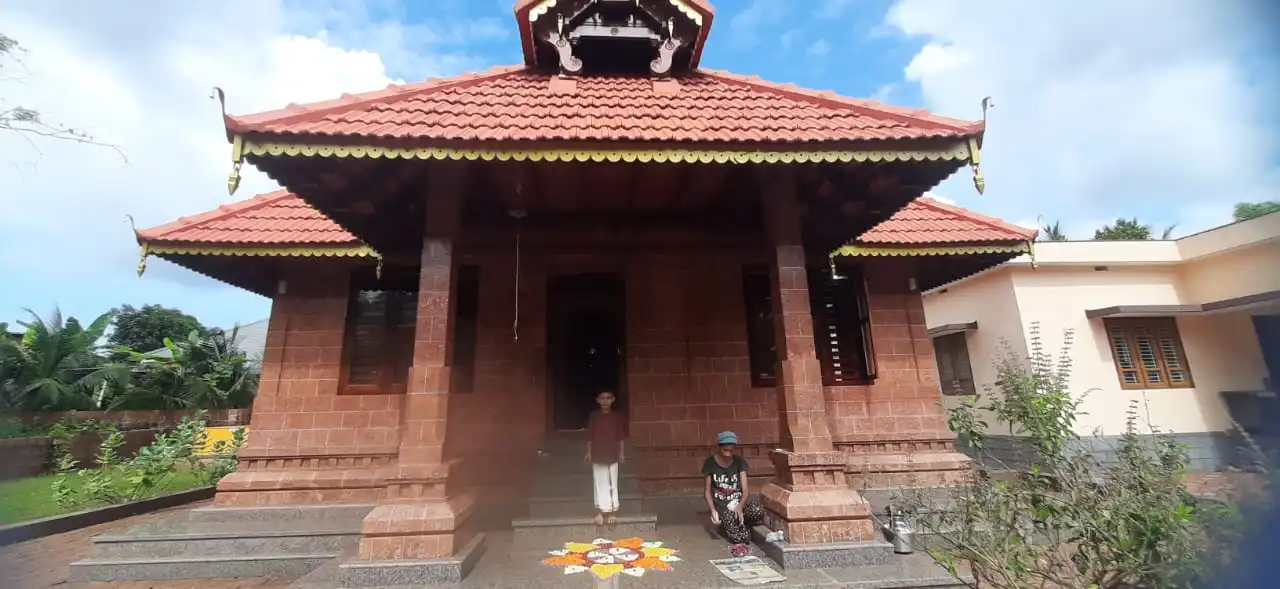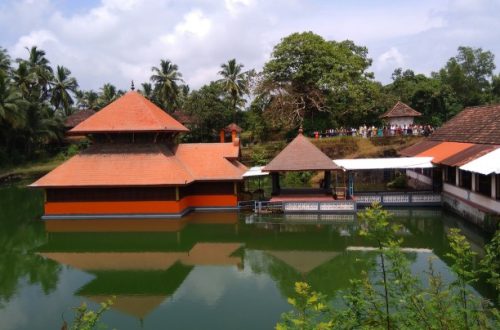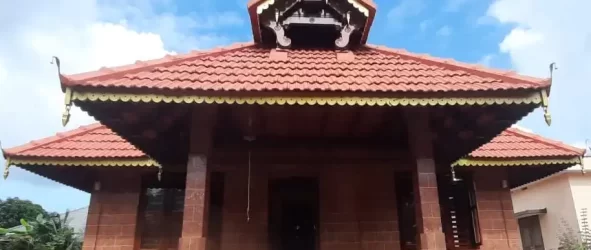
Origination of Illam
Illam also referred to as Mana, is the Malayalam word for the house of any family. In the traditional lineage system used for the classification and identification of homes based on the castes of Kerala, South India, an Illam served as the Tharavad (ancestral house) of families in Kerala and part of Dakshina Kannada District. The family homes are built according to the canons of Vaasthusaasthram, meaning “architecture” in the Sanskrit language.
The traditional layout of a Illam is in the form of an open courtyard which is located in the middle, known as the Nadumittam (‘nadu’ meaning middle and ‘mittam’ meaning earth/ground). These buildings or houses are designed in different patterns such as Nalukettu (a courtyard surrounded by rooms on four sides), Ettukettu (a nalukettu surrounded by another nalukettu), and Pathinarukettu (four layers of buildings constructed around a central courtyard).
Tharavad
Tharavad, also spelled as Tharavadu is the Malayalam word for the ancestral home of aristocratic families in Kerala, which usually served as the common house for the joint family system practiced in the state. The German linguist Hermann Gundert, in his Malayalam—English dictionary published in 1872, defines a Tharavadu as, “An ancestral residence of land-owners and kings”, and also as, “A house, chiefly of noblemen”. Contemporary usage of the word is now more generic to all social classes and religions in Kerala. By extension, the word refers not just to the family’s house but to the extended family that shares that house.
Ancestral Home
An ancestral home is the place of origin of one’s extended family, particularly the home owned and preserved by the same family for several generations. The term can refer to an individual house or estate, or to a broader geographic area such as a town, a region, or an entire country. An ancestral home may be a physical place, part of a series of places that one associates with state, nation or region. In the latter cases, the phrase ancestral homeland might be used. In particular, the concept of a diaspora requires the concept of an ancestral home from which the diaspora emanates. However, it is also possible that “the family living in an ancestral home is surrounded by visible, physical symbols of family continuity and solidarity”
Ancestral Homes and Diaspora
Ancestral homes are considered by some social scientists to be central to humans’ need to acquire a sense of rootedness and smoothly transition to and from different stages of life. People maintain their connections to their ancestral homes at a physical, cultural, symbolic and spiritual level, and these connections are explored differently by members of different generations of migrants. The existence of modern technology, globalization and increased access to the internet through social media also allows individuals to access art, websites and depictions of their ancestral homes and homeland with greater ease. Certain cultural groups have also found ways of engaging and caring for their ancestral homes despite physical separation or destruction in the wake of war or natural disasters.
Expatriation to Ancestral Homelands
The process of returning or finding a sense of engagement with one’s ancestral home or homeland plays a role in the search for belonging and the creation of a sense of personal and cultural identity. Many people return home due to home ownership, strong nationalism or the desire to reconnect with old social relationships.
However, not all expatriates or those who return to their ancestral homelands are motivated by these sentiments. An individual’s distance or closeness to their cultural roots can range from indifference to strong commitment.
People who return to ancestral homes often have to shift from one cultural frame to another or negotiate multiple identities including those from their host country or countries, as a result of their coming from the diasporic movement. Diasporas occur in both Western and Eastern countries and direct ‘flows’ of movement across the globe – for example flows of migration within the East, from East to West, from West to East, and from one Western nation to another.
The flows of migration between nations are also determined by the fact that economic opportunities are condensed within the world’s largest cities, both in the East and West. Other social and political factors such as discrimination and the lack of opportunities for minority groups in foreign countries also drive the flows of expatriates returning to one’s ancestral homeland. Thus, a return to one’s ancestral homeland may be associated with the feeling of being included within a larger majority cultural group.
Research has found that the phenomena of relocating to one’s ancestral homeland is motivated by a number of factors, which can include the desire to explore and to experience more of the world’s cultures, the desire to flee from war or social and political difficulty in one’s home country, the desire to build one’s career in an ancestral homeland, or the desire to participate in their native land’s economy or find greater economic opportunities.
Ancestral Homes and Wellbeing
The need that the ancestral home fills in an individual’s life is considered by some researchers to be a fundamental human need, that of having an attachment to a place and the meanings, experiences, practices and culture associated with it.
Ancestral houses and ancestral land are often associated with ancestral or native language, childhood memories, cultural dishes and cultural tastes, as well as familiar people and practices. These images are often associated with strong sentimentality or comfort for individuals across cultures. – reconnecting with one’s ‘roots’ is considered a formative and significant individual experience by various social scientists.
The benefit that attachment to one’s ancestral home offers an individual is, according to some researchers, the ability to integrate one’s life experiences and attachments into a coherent life story or sense of one’s personal self.
Ancestral Homes in Indian Culture
There is a large range of ancestral homes in India, including more traditionally constructed ones, those constructed under colonial rule, and those traditionally belonging to members of higher castles or feudal estates. A notable type of ancestral home in India includes that of the Chettiar caste, who are a subgroup of the Tamil, Malayalee community. Chettiar ancestral homes are often large, ornate houses or mansions built to accommodate members of an extended family. These houses often consist of two floors, and were traditionally built to segregate men and women, with women’s domain being the inside of the home and household chores, and the men’s being the outer chambers to facilitate business deals and other public affairs. In line with their cultural practice of Hinduism, doorways of the home are often decorated with images of Hindu deities, and specific rooms of the home are used for worship.



